Abstract
The belief that a favorable physiological milieu in the urinary tract may augment the effectiveness of antimicrobial agents used to treat urinary tract infections was examined by using an experimental model of Escherichia coli-induced renal infection in rats. The effect of manipulating urinary pH and flow on the antimicrobial activities of gentamicin, carbenicillin, ampicillin, nitrofurantoin and co-trimoxazole was assessed. In addition, a potential synergistic effect of the sequential administration of gentamicin and cephalothin in the eradication of renal infection was investigated. Although significant physiological alterations were achieved, these did not affect the efficacy of the antimicrobial agents studied, and therapeutic failures were common.
Full text
PDF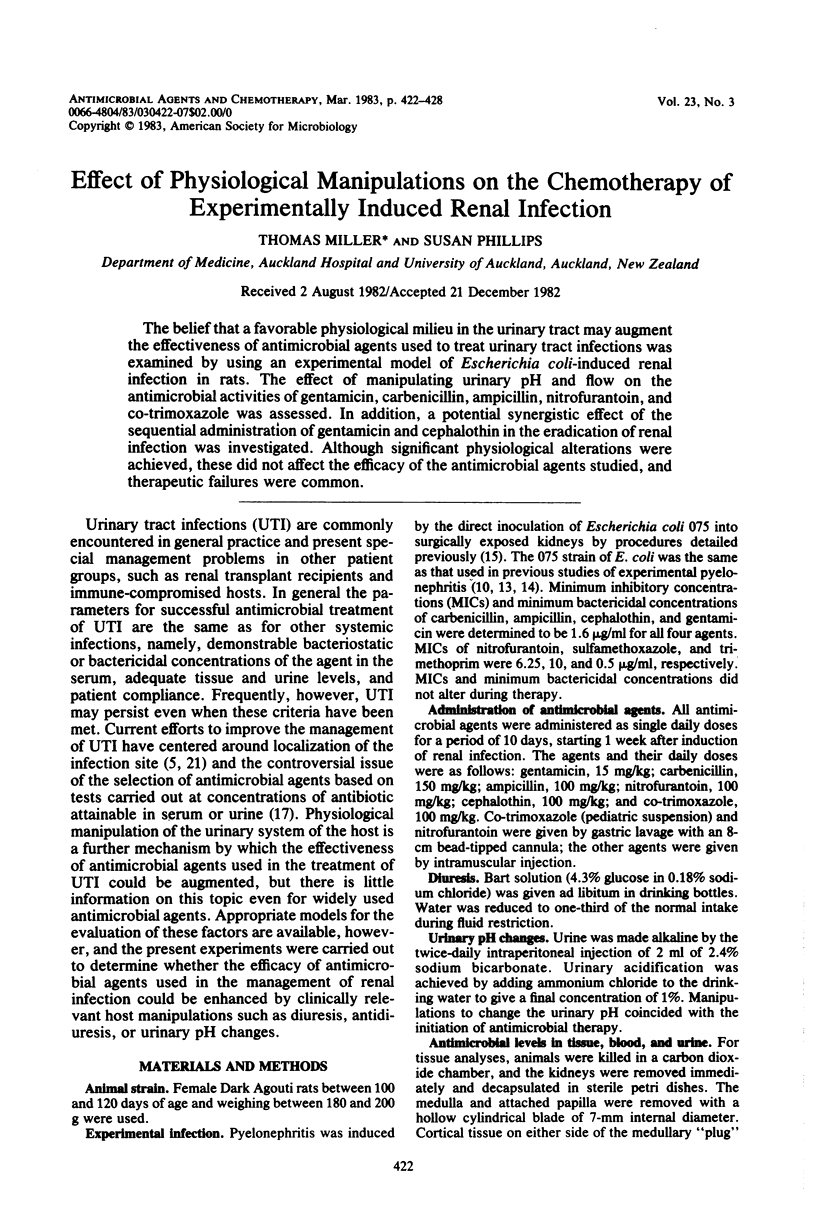
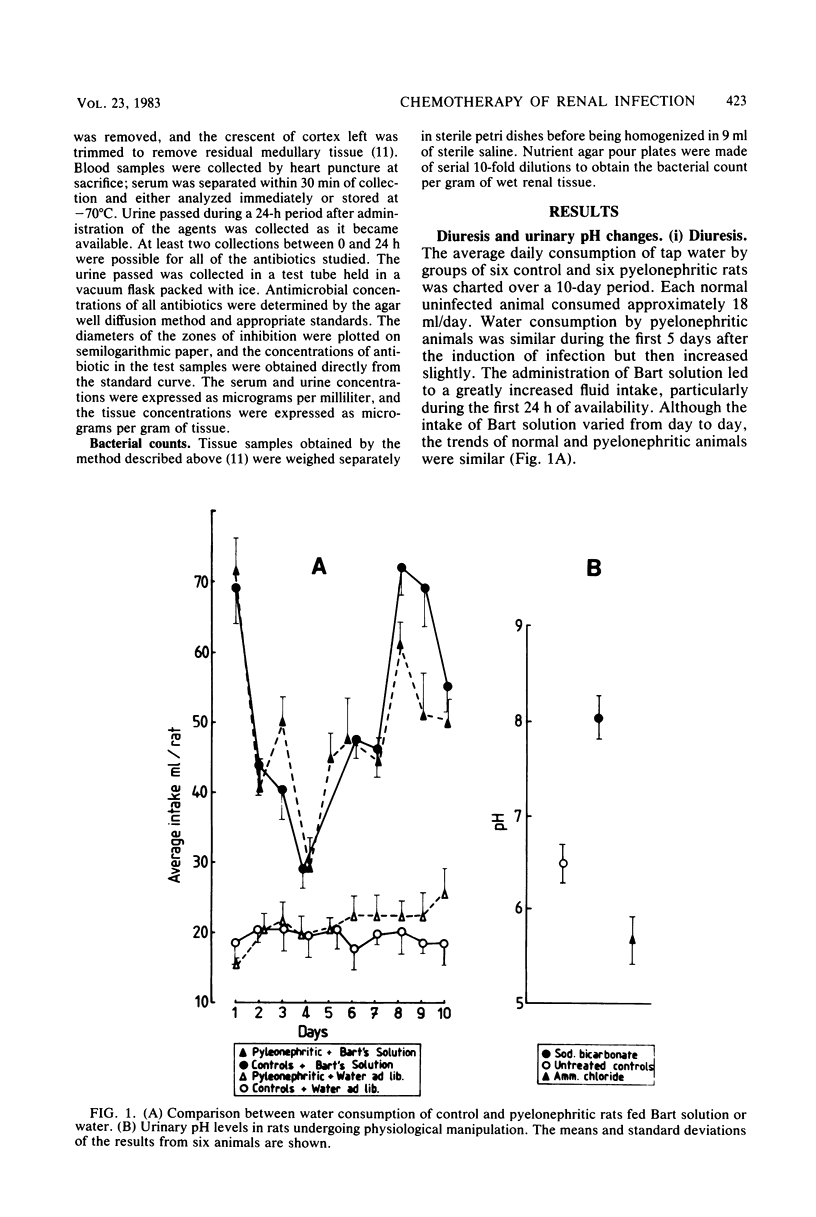
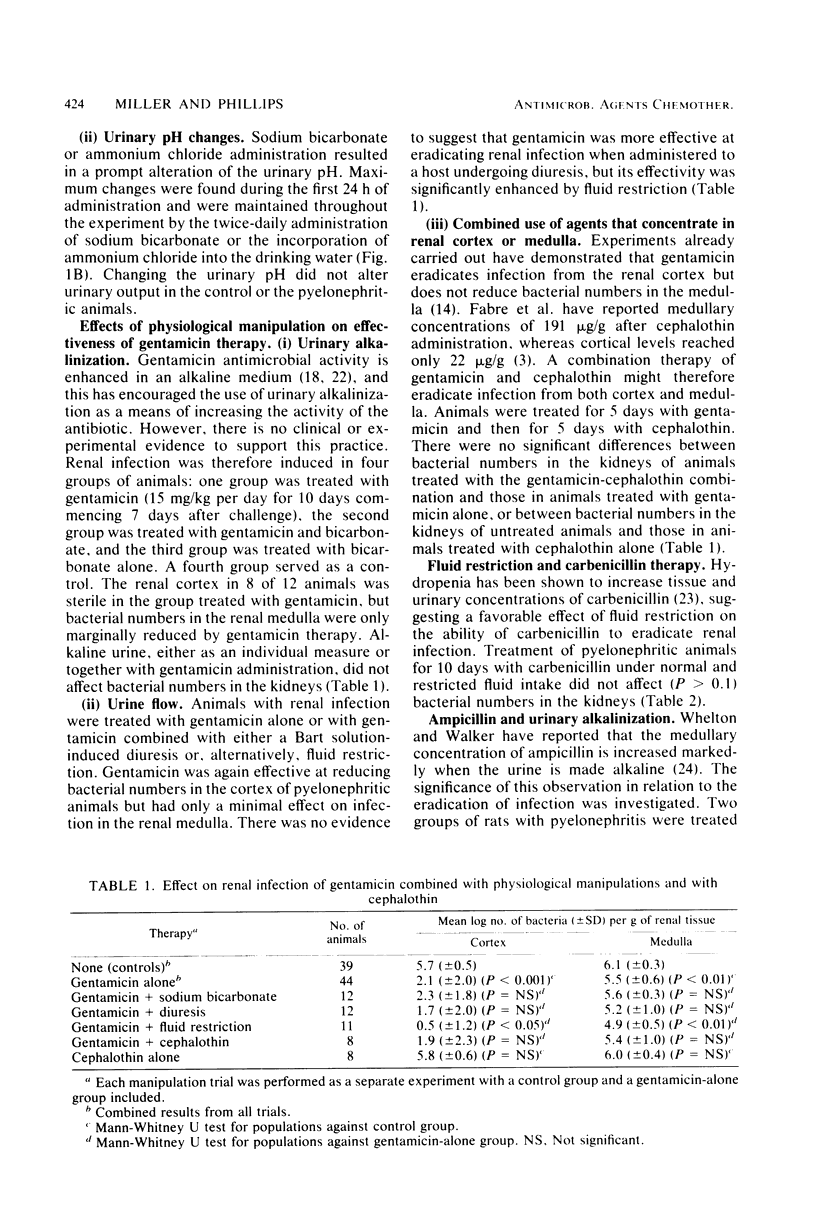
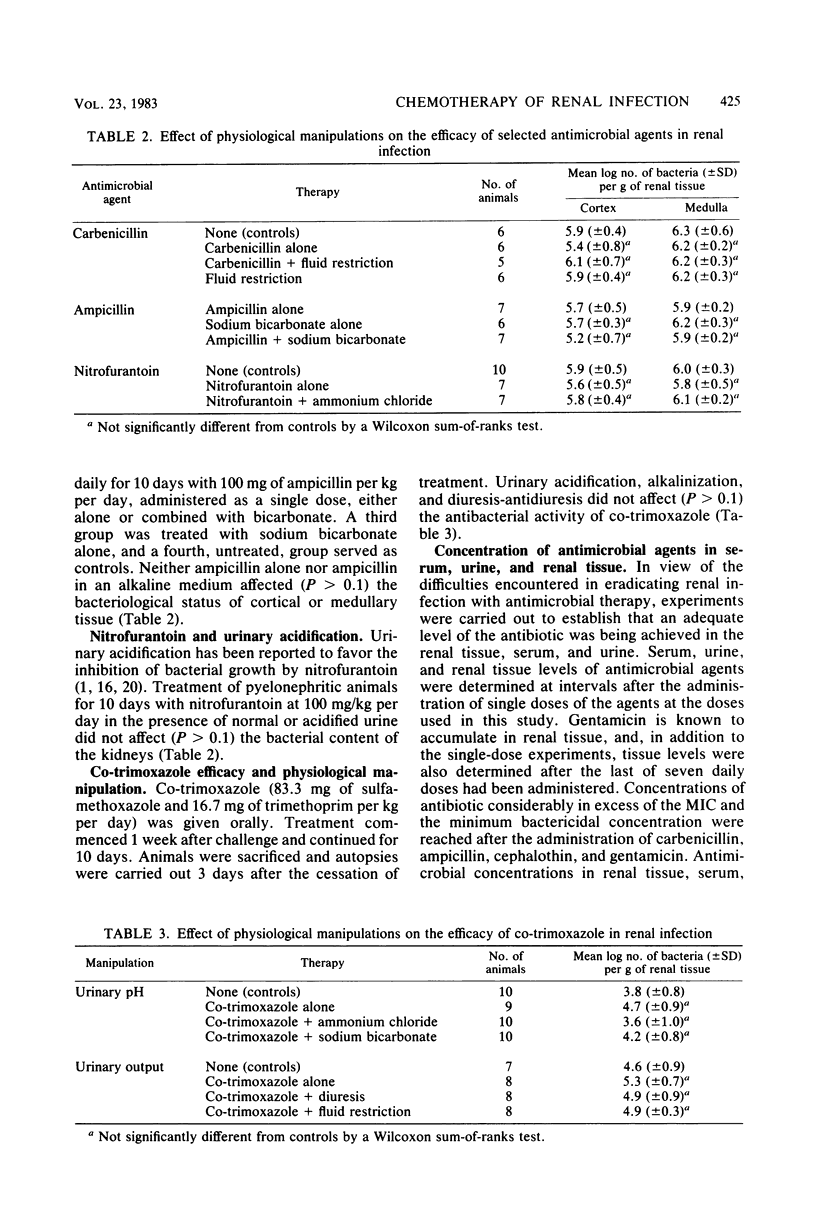
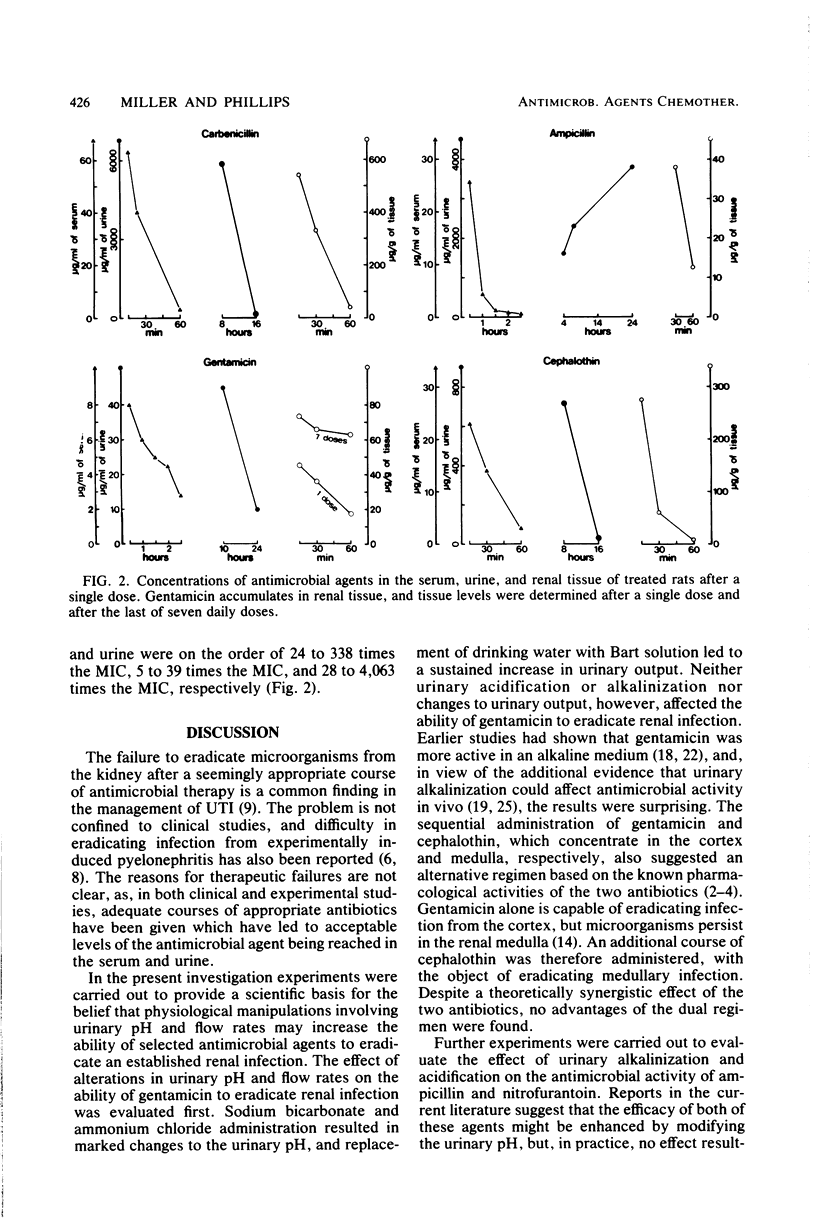
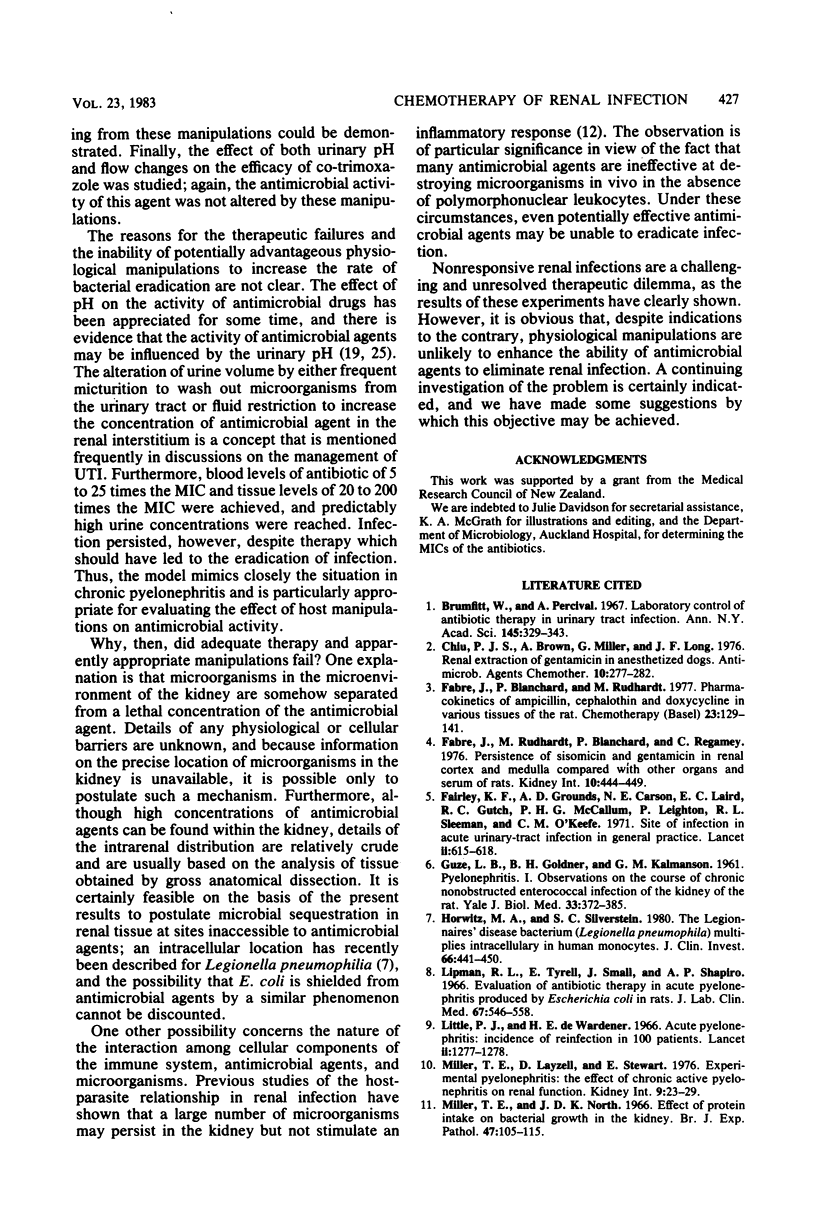
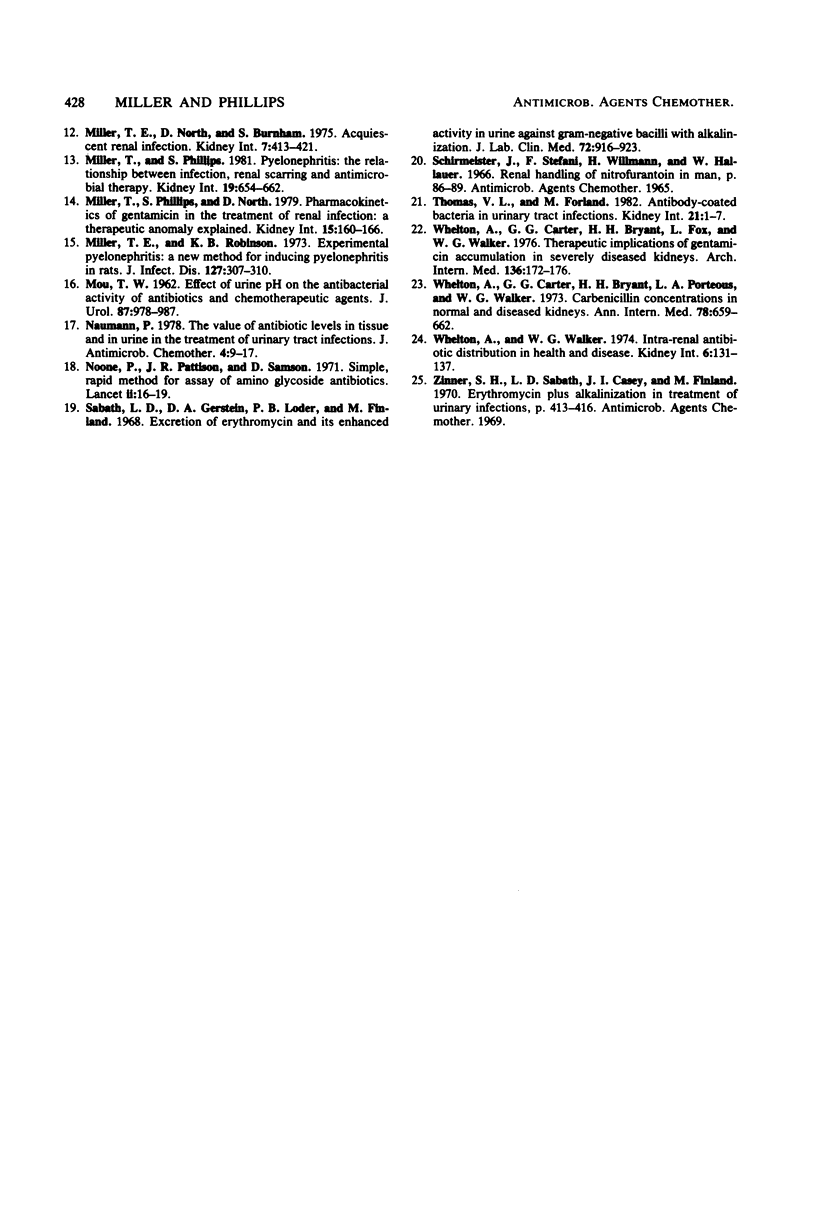
Selected References
These references are in PubMed. This may not be the complete list of references from this article.
- Brumfitt W., Percival A. Laboratory control of antibiotic therapy in urinary tract infection. Ann N Y Acad Sci. 1967 Sep 27;145(2):329–343. doi: 10.1111/j.1749-6632.1967.tb50230.x. [DOI] [PubMed] [Google Scholar]
- Chiu P. J., Brown A., Miller G., Long J. F. Renal extraction of gentamicin in anesthetized dogs. Antimicrob Agents Chemother. 1976 Aug;10(2):277–282. doi: 10.1128/aac.10.2.277. [DOI] [PMC free article] [PubMed] [Google Scholar]
- Fabre J., Blanchard P., Rudhardt M. Pharmacokinetics of ampicillin, cephalothin and doxycycline in various tissues of the rat. Chemotherapy. 1977;23(3):129–141. doi: 10.1159/000221981. [DOI] [PubMed] [Google Scholar]
- Fabre J., Rudhardt M., Blanchard P., Regamey C. Persistence of sisomicin and gentamicin in renal cortex and medulla compared with other organs and serum of rats. Kidney Int. 1976 Dec;10(6):444–449. doi: 10.1038/ki.1976.131. [DOI] [PubMed] [Google Scholar]
- Fairley K. F., Carson N. E., Gutch R. C., Leighton P., Grounds A. D., Laird E. C., McCallum P. H., Sleeman R. L., O'Keefe C. M. Site of infection in acute urinary-tract infection in general practice. Lancet. 1971 Sep 18;2(7725):615–618. doi: 10.1016/s0140-6736(71)80066-1. [DOI] [PubMed] [Google Scholar]
- GUZE L. B., GOLDNER B. H., KALMANSON G. M. Pyelonephritis. I. Observations on the course of chronic non-obstructed enterococcal infection in the kidnev of the rat. Yale J Biol Med. 1961 Apr;33:372–385. [PMC free article] [PubMed] [Google Scholar]
- Horwitz M. A., Silverstein S. C. Legionnaires' disease bacterium (Legionella pneumophila) multiples intracellularly in human monocytes. J Clin Invest. 1980 Sep;66(3):441–450. doi: 10.1172/JCI109874. [DOI] [PMC free article] [PubMed] [Google Scholar]
- Little P. J., De Wardener H. E. Acute pyelonephritis. Incidence of reinfection in 100 patients. Lancet. 1966 Dec 10;2(7476):1277–1278. doi: 10.1016/s0140-6736(66)91690-4. [DOI] [PubMed] [Google Scholar]
- MOU T. W. Effect of urine pH on the antibacterial activity of antibiotics and chemotherapeutic agents. J Urol. 1962 Jun;87:978–987. doi: 10.1016/S0022-5347(17)65077-8. [DOI] [PubMed] [Google Scholar]
- Miller T. E., Layzell D., Stewart E. Experimental pyelonephritis: the effect of chronic active pyelonephritis on renal function. Kidney Int. 1976 Jan;9(1):23–29. doi: 10.1038/ki.1976.3. [DOI] [PubMed] [Google Scholar]
- Miller T. E., North D., Burnham S. Acquiescent renal infection. Kidney Int. 1975 Jun;7(6):413–421. doi: 10.1038/ki.1975.59. [DOI] [PubMed] [Google Scholar]
- Miller T. E., North J. D. Effect of protein intake on bacterial growth in the kidney. Br J Exp Pathol. 1966 Apr;47(2):105–115. [PMC free article] [PubMed] [Google Scholar]
- Miller T. E., Robinson K. B. Experimental pyelonephritis: a new method for inducing pyelonephritis in the rat. J Infect Dis. 1973 Mar;127(3):307–310. doi: 10.1093/infdis/127.3.307. [DOI] [PubMed] [Google Scholar]
- Miller T., Phillips S., North D. Pharmacokinetics of gentamicin in the treatment of renal infection: a therapeutic anomaly explained. Kidney Int. 1979 Feb;15(2):160–166. doi: 10.1038/ki.1979.21. [DOI] [PubMed] [Google Scholar]
- Miller T., Phillips S. Pyelonephritis: the relationship between infection, renal scarring, and antimicrobial therapy. Kidney Int. 1981 May;19(5):654–662. doi: 10.1038/ki.1981.65. [DOI] [PubMed] [Google Scholar]
- Naumann P. The value of antibiotic levels in tissue and in urine in the treatment of urinary tract infections. J Antimicrob Chemother. 1978 Jan;4(1):9–17. doi: 10.1093/jac/4.1.9. [DOI] [PubMed] [Google Scholar]
- Noone P., Pattison J. R., Samson D. Simple, rapid method for assay of aminoglycoside antibiotics. Lancet. 1971 Jul 3;2(7714):16–19. doi: 10.1016/s0140-6736(71)90007-9. [DOI] [PubMed] [Google Scholar]
- Sabath L. D., Gerstein D. A., Loder P. B., Finland M. Excretion of erythromycin and its enhanced activity in urine against gram-negative bacilli with alkalinization. J Lab Clin Med. 1968 Dec;72(6):916–923. [PubMed] [Google Scholar]
- Thomas V. L., Forland M. Antibody-coated bacteria in urinary tract infections. Kidney Int. 1982 Jan;21(1):1–7. doi: 10.1038/ki.1982.1. [DOI] [PubMed] [Google Scholar]
- Whelton A., Carter G. G., Bryant H. H., Fox L., Walker W. G. Therapeutic implications of gentamicin accumulation in severly diseased kidneys. Arch Intern Med. 1976 Feb;136(2):172–177. [PubMed] [Google Scholar]
- Whelton A., Carter G. G., Bryant H. H., Porteous L. A., Walker W. G. Carbenicillin concentrations in normal and diseased kidneys. A therapeutic consideration. Ann Intern Med. 1973 May;78(5):659–662. doi: 10.7326/0003-4819-78-5-659. [DOI] [PubMed] [Google Scholar]
- Whelton A., Walker W. G. Editorial: Intrarenal antibiotic distribution in health and disease. Kidney Int. 1974 Sep;6(3):131–137. doi: 10.1038/ki.1974.91. [DOI] [PubMed] [Google Scholar]


